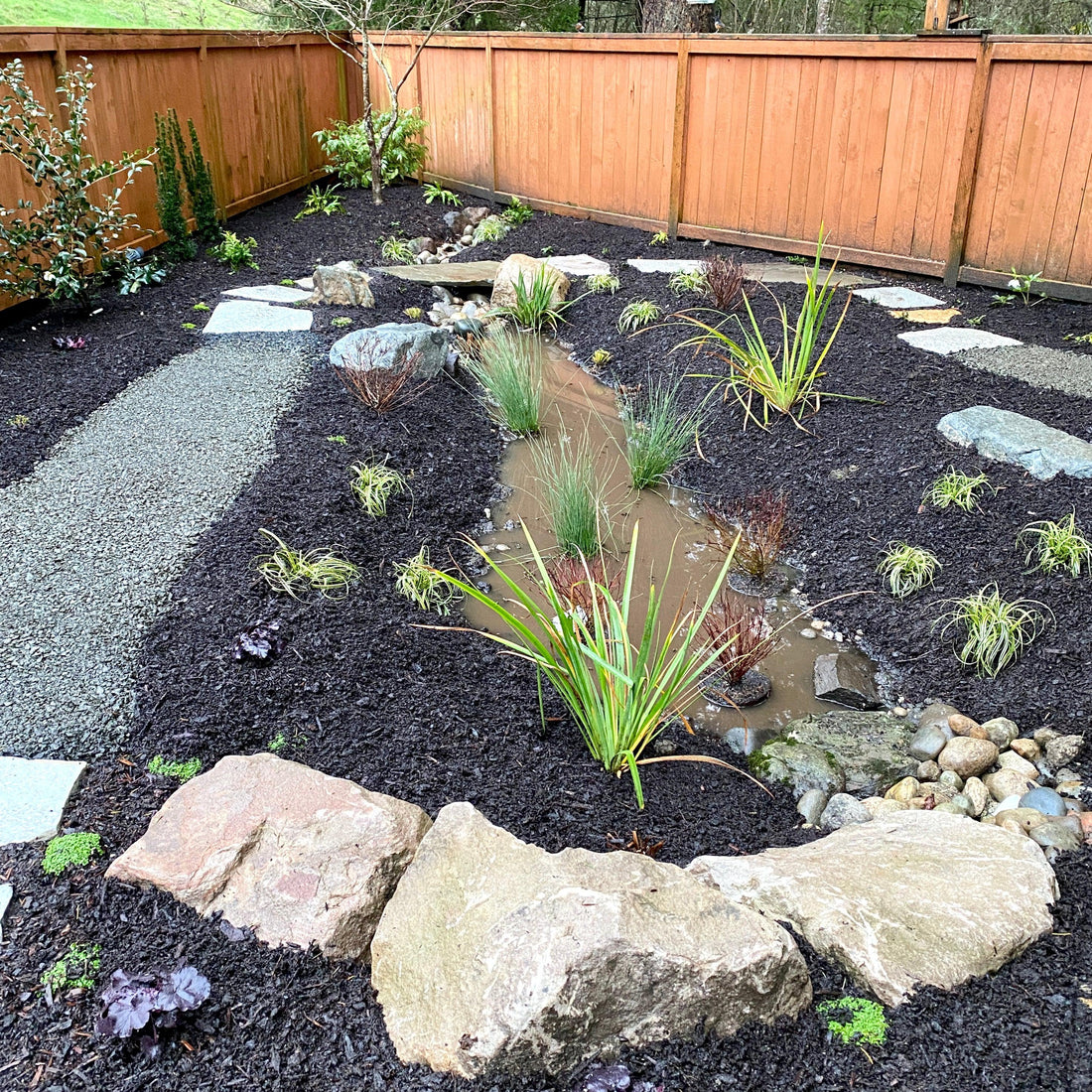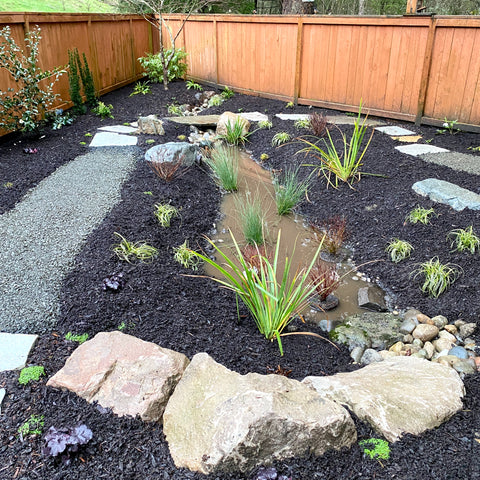
10 Tips for Using Shungite in Your Garden
Valerie BurkeBy now, you are probably familiar with the myriad of ways shungite can be used inside your home or office to protect your health, but have you considered using it in your yard or garden?
Last year - amidst a global pandemic in a crazy year to end all crazies – I bought a house and moved. It felt like a bold endeavor indeed, but all things considered, it has been a huge blessing from the Universe. The house serves as my residence as well as the headquarters for Shungite Queen. Until April of 2020, I had lived in a series of apartments and condos, so I’ve had no yard – just small decks and balconies. Suddenly I had three yards!
I began to ponder how to use shungite in the landscape to support the environment and wildlife with whom I share my special little corner of the world.
Shungite is being used environmentally in a variety of ways. For example, it’s being used in Fukushima to cleanse the water of radiation – or at least it was as of a few years ago.
In Russia, shungite has long been harnessed for water purification, but a lesser-known application is its use in agriculture. Shungite powder can be added as a soil amendment to improve soil quality and crop yield, with the carbon, minerals and other elements contributing valuable nutrients to the plants.
Shungite also helps remove agricultural chemicals from the soil, such as herbicides and pesticides and heavy metals, and improves soil’s capacity for water retention. It also helps build a healthy soil microbiome, discouraging the growth of pathogenic bacteria and allowing beneficial microbes to flourish.
In Regina Marino’s book about Shungite, she refers to a French study by Jean Michael Pasternak and Claude Bernard about the benefits of shungite for plants. The researchers concluded that shungite vastly improved the overall health of plants resulting in more vibrant colors, increased growth, and resistance to blight and dryness. The plants developed stronger root systems, which reinforced their natural defenses and resistance to parasites. The benefits were especially pronounced with fruit trees.
In general, Russian applications for enhancing soil fertility involve using 10 grams of shungite powder per square meter.
Here are 10 tips for how you can use shungite in your own yard and garden.
- Rain Gardens: At my new house, I checked off one item from my Bucket List: a rain garden! I had one designed and built by a talented local eco-landscaper. Since the primary purpose of a rain garden (besides beauty) is to filter out toxins and impurities in runoff thereby reducing the environmental toxic load, I added some shungite to the rain garden to assist the plants with their efforts. You can’t really see the shungite, but here are some photos of my beautiful little Pacific Northwest rain garden.



- Catios, doghouses, barns and stables: Place some raw shungite in or around structures to protect pets. In the rain garden area, Mike and I built a cat run and catio so that Rumi and Rishi could enjoy the yard safely – which is especially important for Rishi, being completely blind. I placed a few pieces of black shungite in nooks and crannies of the catio.


- Bird baths: Add a few elite pebbles to a bird bath to help reduce bacterial and fungal growth. Be sure to provide fresh, clean water often – the birds don’t like drinking dirty water any more than we do!
- Shungite beekeeping: I am not a beekeeper, but I have been following the shungite beehive movement with great interest. Shungite has been shown to cause bee colonies to thrive, expand, and even prevents/reverses colony collapse disorder (CCD). Bees with shungite around their hives are healthier, more resilient, less diseased, and their hives expand by an enormous amount. Shungite pieces can be added to the entrance, or the hive can be painted with shungite-containing paint. Shungite beekeepers report not requiring any of the usual chemicals to keep the bees healthy, and no mites to deal with. I don’t see why this couldn’t also be done for bat and bird houses. Here’s a nice interview about shungite beekeeping with Derek Condit.
- Toad house: Place a little chunk of shungite in front of or inside a toad house to protect the amphibian house-dwellers.
- Vegetable and flower gardens: Mix shungite powder or chips into the bed for stunning flowers and a bountiful harvest.
- Fruit trees: For fruit and other types of trees, water them with shungite water and/or spread shungite powder or chips at the base of the tree. You can even amend the soil with shungite when planting. The recommended ratio is 7 grams shungite powder per 1 liter of water, then let it sit for 3 days before using it to water trees and other plants. (Note: this is different from shungite drinking water, which uses only elite (type 1) shungite. For plants, it is safe to use black (type 2) shungite.)
- Indoor potted plants: As above, water with shungite water.
- Flower vase: Use shungite water to extend the life of cut flowers.
- “Retired” Elite Shungite Water Stones: I replace my elite shungite stones in my shungite drinking water dispenser every 12 to 18 months. Then I incorporate the retired stones into the garden when the fresh ones go into my water dispenser.
These are just a few suggestions – I'm sure you can think of others! The sky is the limit when it comes to shungite. I am considering adding some decorative shungite plant stakes to my accessories collection this spring to further enhance our yard and garden habitats, so keep an eye out for those!

